Applying XSE to Education

Education used to be confined to institutional spaces and time constraining curriculum. Now people are able to learn the cutting edge research from world-class universities and institutions without having to physically be on-site and often times without the standardized learning schedule. With the luxury of online education becoming more easily accessible and affordable, many people are harnessing the power of technology as a launchpad for greater academic achievement beginning with the youngest school ages. Many people throughout the decades have felt limited in their educational advancement by pre-set time frames which could make it difficult to advance independently at their own pace. As times are changing, and the importance of education is increasing, it is beneficial to apply Critical and Creative Thinking (XSE’s X Axiom) when analyzing and opening your mind to endless new possibilities, seeking authentic and ultimate resources (XSE’s Z Axiom) as well as re-evaluating traditional ideas of “full potential” as humans when deciding customized application to your own life (XSE’s Y Axiom). This is XSE applied to education, this is Sophistechnication.
As many are adjusting to the new horizons and speed of technology, the traditional binding constraints of education are being clipped, paving new roads to a world of opportunity and swift advancement.

The dawn of artificial intelligence (AI), alongside other scientific discoveries and cutting-edge technologies like virtual reality (VR), is poised to redefine traditional intellectual norms and expectations of human intelligence. These advancements have the potential to significantly enhance cognitive capabilities, learning methods, and the application of knowledge, leading to new levels of expected human intelligence. Here’s how:
Enhanced Learning and Cognitive Enhancement
AI and VR technologies can customize and enhance learning experiences to unprecedented levels. AI-driven educational platforms can adapt to individual learning styles and speeds, identifying weaknesses and tailoring content accordingly. VR can simulate complex environments for immersive learning experiences, making it possible to practice surgeries, explore historical sites, or understand complex systems in a safe, controlled setting. These technologies not only make learning more efficient but also deepen understanding and retention of knowledge.
Augmented Decision-Making
AI systems can process and analyze vast amounts of data far beyond human capability, providing insights and recommendations that enhance human decision-making. In fields like medicine, finance, and environmental science, this can lead to more informed, accurate decisions based on comprehensive data analysis. As humans collaborate more with AI in decision-making processes, the expectation for what constitutes informed decision-making is likely to rise.
Cognitive Extension and Collaboration
Technologies like AI and VR extend cognitive capabilities by providing tools that allow us to solve problems more effectively and creatively. For example, AI can suggest novel solutions to complex problems by identifying patterns invisible to the human eye, while VR can help conceptualize and visualize solutions in a spatial context. This cognitive extension encourages a more collaborative approach between humans and machines, pushing the boundaries of traditional intellectual work.
Redefining Intelligence
The integration of AI and advanced technologies in everyday life challenges the traditional notion of intelligence as solely a human attribute. With machines demonstrating capabilities such as learning, problem-solving, and even creativity, the definition of intelligence is expanding to include artificial intelligence. This shift may lead to a reevaluation of what is considered “intelligent” behavior or thought, both for machines and humans.
Ethical and Philosophical Implications
As technology advances, it also raises ethical and philosophical questions about intelligence, consciousness, and the essence of being human. The relationship between human intelligence and machine intelligence invites us to reconsider the values we associate with human thought, creativity, and emotional intelligence. It also prompts a reflection on how we can harness technology to enhance human well-being without diminishing the intrinsic value of human experience.
In conclusion, the advent of AI, VR, and other technologies represents a paradigm shift in our understanding and expectations of human intelligence. By augmenting and extending our cognitive capabilities, these technologies not only offer the potential for significant advances in various fields but also invite a reexamination of the very nature of intelligence and learning. As we navigate this new landscape, it will be crucial to consider the ethical dimensions and ensure that technological advancements contribute positively to human society.
Are Multiple PHD's going to be common soon?

With the ongoing advancements in technology and its integration into education, the concept of lifelong learning is becoming more achievable and dynamic than ever before. The possibility of an individual pursuing continuous education, resulting in multiple PhDs or equivalent qualifications throughout their lifetime, is not only logical but increasingly feasible. This continuous educational journey is facilitated by various technological innovations, leading to even more phenomenal possibilities:
Personalized Learning Platforms
Artificial Intelligence (AI) and Machine Learning (ML) technologies enable personalized learning platforms that adapt to an individual’s learning pace, style, and interests. These platforms can identify strengths and areas for improvement, offering customized courses and materials. This personalization makes ongoing education more efficient, engaging, and effective, encouraging lifelong learning.
Micro-Credentials and Modular Learning
The rise of micro-credentials and modular learning allows individuals to accumulate knowledge and skills in a more flexible manner. Rather than committing to a long-term program, learners can stack short courses and certificates over time, potentially leading to advanced qualifications. This approach supports continuous skill development and specialization in emerging fields.
Virtual Reality (VR) and Augmented Reality (AR)
VR and AR technologies offer immersive learning experiences that can simulate real-world scenarios and complex environments. These tools can be used for practical training in fields like medicine, engineering, and science without the constraints of physical location or resources. Such immersive experiences not only enhance learning outcomes but also make education more accessible and engaging.
Global Collaboration Networks
Technology enables collaboration across geographical boundaries, allowing learners to engage with peers and experts worldwide. This global network fosters diverse perspectives, innovation, and cross-disciplinary research, enriching the educational experience and opening up new avenues for academic and professional growth.
AI-Assisted Research
AI tools can assist in the research process by analyzing vast amounts of data, identifying patterns, and generating insights. This capability can significantly accelerate the pace of research, making it easier for scholars to contribute novel findings to their field of study and pursue multiple advanced degrees over their lifetime.
Lifelong Learning Ecosystems
The future of education may see the development of lifelong learning ecosystems supported by technology, where education is seamlessly integrated into daily life. Continuous learning could become a societal norm, with individuals routinely updating their knowledge and skills to adapt to an ever-changing world.
Beyond Traditional Degrees
Technological advancements in education might lead to the recognition of alternative forms of credentials and learning achievements that go beyond traditional degrees. Learning could become more project-based, with achievements in real-world problem-solving and innovation being valued alongside or even above formal academic qualifications.
In conclusion, the intersection of education and technology not only makes perpetual education a practical reality but also opens up unprecedented opportunities for personal and professional development. As we continue to harness these technological advancements, the landscape of education and what it means to be a lifelong learner will undoubtedly continue to evolve in exciting ways.
The Increasing Importance of Education

In the information age, education has become more important than ever due to the rapid pace of technological advancements, the vast availability of information, and the evolving nature of work. Here’s how the significance of education is amplified in this era:
Navigating the Information Overload
The digital age has ushered in an era of information abundance. While access to information has become easier, discerning accurate, relevant, and reliable information from misinformation or overwhelming data requires critical thinking and analytical skills. Education equips individuals with these essential skills, enabling them to navigate the information landscape effectively.
Keeping Pace with Technological Advancements
Technological advancements are transforming industries, creating new fields, and rendering old skills obsolete. Continuous education is vital to keep pace with these changes, ensuring individuals remain employable and can adapt to new technologies. Lifelong learning has become a necessity for career advancement and personal development in a world where the only constant is change.
Fostering Innovation and Creativity
The information age thrives on innovation and creativity. Education encourages a culture of inquiry, problem-solving, and critical thinking, which are foundational for innovation. By instilling these values, education fosters the development of new ideas, products, and solutions that drive progress in society and the economy.
Enhancing Social and Emotional Intelligence
In an increasingly connected world, social and emotional intelligence are as important as technical skills. Education plays a crucial role in developing empathy, communication skills, and cultural awareness, which are essential for navigating the complexities of global interaction and collaboration in the information age.
Addressing Global Challenges
The world faces complex global challenges, including climate change, inequality, and public health crises. Education provides the knowledge and tools to understand these issues, fostering a generation of informed citizens capable of making decisions that contribute to sustainable solutions.
Economic Growth and Equality
Education is a key driver of economic growth and social equality. It equips individuals with the skills needed to participate in the economy, access better job opportunities, and innovate. Furthermore, education can help bridge the digital divide, ensuring that people from diverse backgrounds have the opportunity to succeed in the information age.
Empowering Citizens in a Digital World
The information age has transformed the way we live, work, and engage with society. An educated population is better equipped to leverage digital technologies for personal empowerment, engage in informed civic participation, and advocate for positive social change.
Preparing for the Future of Work
As automation and AI reshape the future of work, education ensures that individuals are prepared for new types of jobs that will emerge. It also emphasizes the importance of human-centric skills, such as creativity, empathy, and adaptability, which are less susceptible to automation.
In summary, education is the foundation upon which individuals can build the skills, knowledge, and critical thinking abilities required to thrive in the information age. It not only prepares individuals for the challenges and opportunities of a rapidly changing world but also plays a pivotal role in driving innovation, economic growth, and social progress.
With tech-based learning, could you "engineer" a customized education outpacing standardized expectations?

Systems Engineering, Project Management, and systems thinking has been utilized within the educational system for decades. In this age of easily accessible information more people are asking: “Who is ultimately making the decisions for my family’s education and therefore making one of the most significant impacts on our lives, and in what direction are those choices ultimately taking us?” No matter what professional title a “systems engineer” of a standardized educational institution bears, how are they choosing the curriculum training the next generation of society? Why are subjects such as logic and critical thinking not typically included within the mandated junior high or high school courses? Don’t we want a society that teaches and develops these valuable and vital skills, empowering people to think on their own two feet, with freedom to ask questions regarding what is being taught? Is it possible that this has just merely been an oversight? With so much information, and misinformation, it’s easy to see how confusion itself could be used to steer people in any direction, so now more than ever, critical and creative thinking are necessary skills to successfully maneuver through life, along with knowledge that is based in solid, clear understanding.
Systems Engineering used within Educational Systems

Systems engineering principles have been applied in educational systems in various ways to enhance efficiency, effectiveness, and outcomes. Some examples include:
Systems engineering principles have been used to design and develop educational curricula that are comprehensive, coherent, and aligned with learning objectives. By taking a systems approach to curriculum development, educators can ensure that different subjects, topics, and learning activities work together harmoniously to achieve desired educational outcomes.
Systems engineering has been applied in instructional design to create learning materials, methodologies, and technologies that optimize the learning process. By using a systematic approach to instructional design, educators can develop engaging and effective learning experiences that are tailored to the needs of diverse learners.
Systems engineering principles have been utilized in the development and implementation of learning management systems (LMS), which are software platforms used to deliver and manage educational content and activities. By designing LMS with a systems perspective, educators can ensure seamless integration of various features and functionalities, such as course management, assessment tools, and student tracking.
Systems engineering has informed the design and development of educational technologies, such as interactive simulations, virtual laboratories, and adaptive learning systems. By leveraging systems thinking, educators can create technology-enhanced learning environments that facilitate active engagement, personalized learning experiences, and data-driven decision-making.
Systems engineering principles have been applied in the design of assessment and evaluation processes to measure student learning outcomes and program effectiveness. By using systematic approaches to assessment design, educators can develop valid, reliable, and fair assessment tools that provide meaningful insights into student performance and progress.
Systems engineering emphasizes continuous improvement and optimization of systems over time. In the educational context, this involves collecting and analyzing data on student learning, instructional practices, and program effectiveness to identify areas for improvement and implement evidence-based interventions.

While systems engineering has played a significant role in shaping educational systems and practices, it is not universally applied in educational institutions. Still, aspects of its methodology may be incorporated into various areas of educational administration, curriculum development, instructional design, and technology integration. For example, educational institutions may use systematic approaches to strategic planning, resource allocation, and performance evaluation to improve organizational effectiveness and student outcomes.
Additionally, some educational institutions may adopt specific methodologies or frameworks that align with systems engineering principles, such as Total Quality Management (TQM), Continuous Improvement (CI), or Lean Six Sigma. These methodologies aim to optimize processes, enhance quality, and drive continuous improvement within educational organizations.
The newly emerging, sophisticated, sovereign, responsibly intelligent, technologically advanced, luxury education of unrestricted potential.

XSE Introduces the Era of SOPHISTECHNICATION
Beyond Global, Advanced & Technically Applied Education
The term “sophisticated” in regards to XSE applied education encompasses the idea of an education that is well-rounded and globally sourced from world-class institutions. In this context, sophistication refers to a comprehensive and high-quality educational experience that goes beyond basic or local knowledge. Key elements of a sophisticated education in this sense could include:
Global Perspective: Exposure to diverse perspectives, cultures, and global issues, reflecting an awareness of the interconnected nature of the world.
Quality Institutions: Attaining education from world-class institutions known for their excellence in teaching, research, and academic reputation.
Interdisciplinary Learning: Integration of knowledge from various disciplines, fostering a holistic understanding of subjects.
Research and Innovation: Opportunities for research and innovation, allowing students to contribute to the creation of new knowledge and advancements in their field.
Critical Thinking and Problem-Solving: Development of critical thinking skills and the ability to address complex problems with a sophisticated approach.
Cultural Competence: Exposure to diverse cultures and languages, promoting cultural competence and a global mindset.
Networking Opportunities: Access to a broad network of professionals, experts, and peers from around the world, facilitating collaboration and the exchange of ideas.
The idea is that a sophisticated education, in this context, not only gradually provides depth and expertise in a specific field but also equips individuals with a broader and more nuanced understanding of the world. It acknowledges the importance of a well-rounded education that draws on global knowledge and perspectives to prepare individuals for a rapidly changing and interconnected world.
Here XSE expounds on “beyond” global as the value and power of virtual and augmented reality is on the horizon. XSE acknowledges the potential for human advancement in the virtual ground of -X-Skyway metaverse (under development).
XSE’s methods call for utilizing cutting-edge technology in order to maximize the systems ability to perform optimally. Therefore, with the importance of technology in XSE, “techni” is at the heart of Sophistechnication, especially since Sophistechnication would be impossible without the use of modern technology. Additionally, XSE promotes education that is technically applied where possible, within reason. The term “technically applied” in the context of education could imply an approach where theoretical knowledge is actively and practically implemented or put into practice. It suggests a focus on the practical application of technical skills, tools, or methodologies learned in a theoretical or academic setting.
Key aspects of “technically applied” education might include:
Hands-On Learning: Emphasis on hands-on experiences and practical exercises that allow students to apply theoretical concepts in real-world scenarios.
Laboratory Work: Integration of laboratory work or practical sessions where students engage with equipment, technologies, or experiments related to their field of study.
Internships and Work Placements: Opportunities for students to engage in internships, co-op programs, or work placements, providing direct exposure to the application of knowledge in professional settings.
Project-Based Learning: Incorporation of project-based learning approaches where students work on real projects or case studies, applying technical skills to solve practical problems.
Simulation and Modeling: Use of simulations and modeling tools to replicate real-world scenarios, allowing students to apply technical knowledge in a controlled environment.
Field Work: Inclusion of fieldwork or site visits that expose students to the actual conditions and challenges within their chosen field.
Industry Collaboration: Collaboration with industry partners, professionals, or practitioners to provide students with insights into the practical applications of their education.
Practical Assessments: Evaluation methods that focus on assessing the practical application of skills and knowledge rather than solely relying on theoretical exams.
In essence, a “technically applied” approach to education seeks to bridge the gap between theory and practice, ensuring that students not only acquire theoretical knowledge but also gain the practical skills and experience necessary for success in their chosen fields. This approach is particularly common in technical or vocational education programs.
In Sophistechnication “cation” is not just directly pulled from the word education, but is meant to remind us of the fact that historically speaking, education has been a privilege associated with luxury and leisure, which directly ties in to Luxxacation, which is a fundamental iteration of XSE as it drives the motion of the XSE Axiomatic Method. See More on Luxxacation here. Just as Luxxacation is a luxury that can be had simply through taking a few moments for yourself here and there, likewise, Sophistechnication, as luxurious as it is, thanks to technology, is positioned to be able to be part of a new way of life for those who aspire to learn.
In ancient civilizations, education was often associated with the elite and the privileged class, and it was not as widely accessible as it is today. In certain cultures, especially those with hierarchical social structures, education was a symbol of status and often reserved for the ruling class or the aristocracy.
Here are a few historical perspectives on education and its association with leisure and luxury:
Ancient Greece:
- In ancient Greece, education was highly valued, particularly in city-states like Athens. However, it was primarily available to the sons of free citizens. The education of the elite focused on areas like philosophy, rhetoric, and physical training, and it was seen as a mark of refinement and citizenship.
Roman Empire:
- In ancient Rome, education was initially a privilege of the wealthy class. While there were efforts to provide education to a broader population, the quality and depth of education were often determined by social status.
Medieval Europe:
- During the medieval period, education was closely tied to religious institutions. Monasteries and cathedral schools were centers of learning, but access to education was limited. Education for the elite often included training in the liberal arts and classical literature.
China and Confucian Traditions:
- In ancient China, education was associated with Confucian values and was primarily available to the aristocracy and those preparing for government service. The emphasis was on moral education and the classics.
Islamic Golden Age:
- During the Islamic Golden Age, centers of learning known as madrasas were established. Education was more widely accessible, but there were still elements of privilege, and the elite had greater access to advanced studies.
It’s important to note that while education was associated with the elite, the forms and goals of education varied across cultures and historical periods. As societies evolved and underwent changes, there were shifts in educational systems and a gradual expansion of access to education.
In contemporary times, education is generally considered a fundamental right, and efforts have been made to make it more inclusive. However, disparities in access to quality education still exist in various parts of the world. The association between education and privilege has evolved, and the importance of education for social and economic mobility is widely recognized today.
Education is not what it used to be.
Not even the sky is the limit anymore. Why limit yourself?

Today you can be the systems engineer of your and your household’s education. People now have the ability to enroll in chosen subjects from world class educational institutions to fit within a tailored master plan of a personalized curriculum suited to your ideologies. Provisions can be made for your child to implement their own educational pursuits as they advance. Some online academies have developed methods to gamify learning (interactivity is known to increase retention), in addition to offering videos (visuals are powerful tools for comprehension) and tutoring to teach new concepts. These new benefits provide an enticing invitation to children to embark on a path of exercising independent learning, which can be considered the key to the love of learning. You provide the environment and it’s safety controls, including who they are around and are impacted by, who they maintain friendships with, who is influencing their emotional and spiritual development. When an individual is given the freedom and opportunity to advance at their own pace, mastering the subjects incrementally with their eyes on the big picture, aware of the purpose and importance of learning each subject, and actually applying the lessons to their life within reason, then the idea of learning takes on an exciting new feeling, helping to open the brain and prime it with desire and great purpose for life.
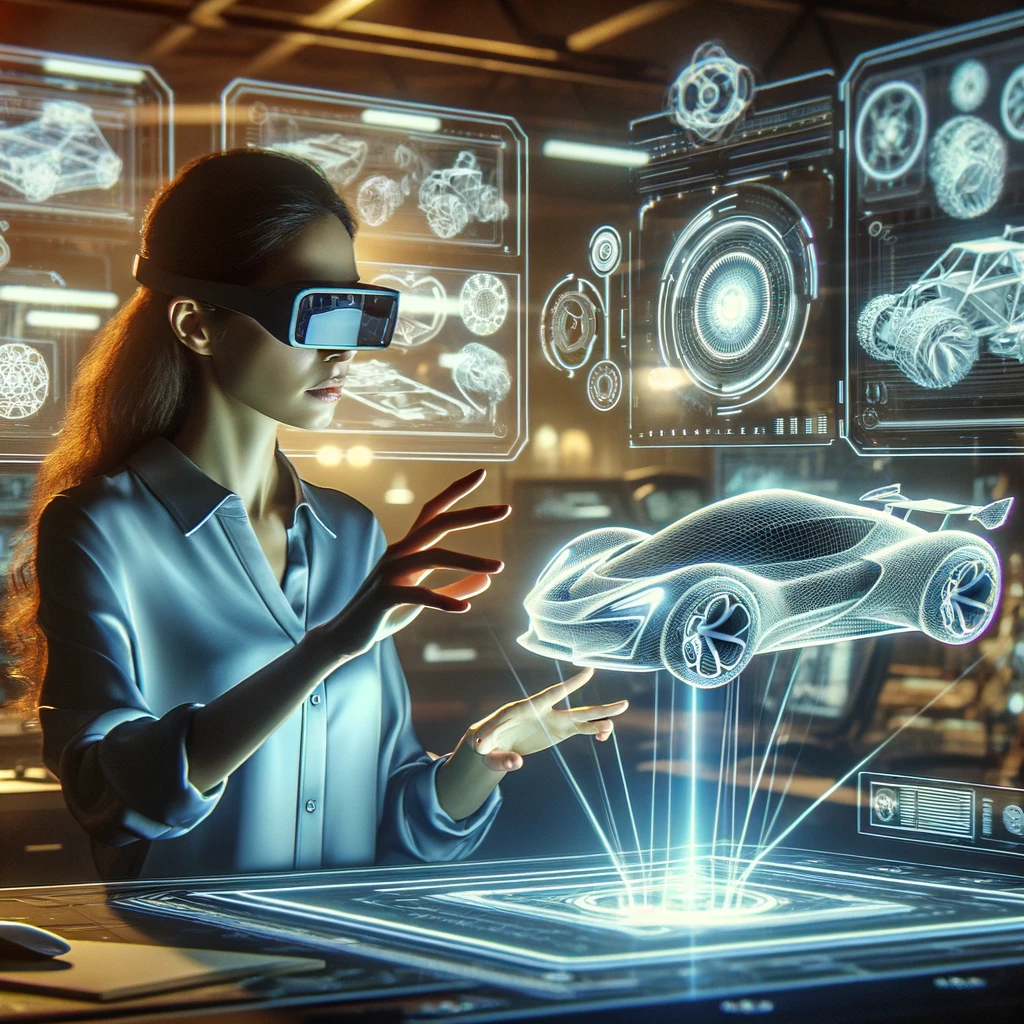

Have we forgotten the value of knowledge and understanding? Just when and how did education go from being the luxury and leisure of the privileged to being a drudgery and a difficulty to be endured until graduation day, when one is free to no longer need to learn, as if they “know it all?” Even for those of us who love learning about one subject or another, let us search for those subjects that “don’t come naturally” and ask ourselves, in some regard, do we harbor a rebellion against learning? By maintaining this attitude we pre-set ourselves against comprehension, or at least make it a lot harder to understand and retain knowledge. People who dread learning or label it as “difficult” put themselves at a great disadvantage. After all, it is through knowledge, wisdom and understanding that one reaches a level of awareness and critical thinking that makes it difficult to be tricked or deceived into regretful situations. XSE promotes working Sophistechnication in as a part of your life. Some easily accessible (sometimes free) and interesting classes that can stir a love for learning in adults can be found on platforms like Coursera, such as “The Science of Wellbeing” by Yale University. After all, maybe that hour that you spend here and there on media doesn’t seem to be leaving you any better off than before, perhaps even worse. Once you start advancing intellectually, even if it is only an hour a day, it becomes the new you, your new habit that you may find yourself looking forward to daily. But that is only the beginning, think then of how you can apply that knowledge in your life.
... extending to XSE's X, Y, and Z Axioms

Integrity, often defined as the consistency of actions with one’s values and principles, can be significantly bolstered by employing critical and creative thinking to arrive at the best decisions. Here’s how the application of these thinking skills contributes to integrity and personal growth:
Alignment with Values:
- Critical thinking involves assessing information and making reasoned judgments. By applying critical thinking, individuals can evaluate decisions in light of their core values. This alignment ensures that chosen actions are in harmony with personal principles, strengthening integrity.
Holistic Decision-Making:
- Integrating critical and creative thinking allows for a more holistic approach to decision-making. Critical thinking helps analyze and assess various options, while creative thinking enables the generation of innovative solutions. This comprehensive perspective contributes to well-rounded and thoughtful decisions that align with personal values.
Mindful Reflection:
- Critical thinking encourages reflective analysis, enabling individuals to consider the implications and consequences of potential decisions. This reflective process allows for a deeper understanding of one’s values and how they may be affected by different courses of action.
Ethical Considerations:
- Critical thinking involves ethical reasoning, evaluating actions based on moral principles. By incorporating ethical considerations into decision-making, individuals ensure that their choices reflect a commitment to integrity and moral values.
Problem-Solving Skills:
- Critical and creative thinking enhance problem-solving skills. These skills are crucial for navigating challenges, finding innovative solutions, and making decisions that contribute to personal growth and advancement.
Informed Decision-Making:
- Critical thinking involves gathering, analyzing, and synthesizing information. Informed decisions, based on a careful examination of relevant data, contribute to a more thorough understanding of the situation. This, in turn, supports decisions that are well-considered and consistent with one’s values.
Openness to Diverse Perspectives:
- Creative thinking involves considering alternative viewpoints and generating novel ideas. Embracing diverse perspectives allows individuals to broaden their understanding, fostering a more inclusive decision-making process. This openness contributes to decisions that are respectful and considerate of various values and beliefs.
Adaptability:
- Critical and creative thinking promote adaptability. Individuals who actively engage in these thinking processes are better equipped to adjust their decisions in response to changing circumstances. This adaptability contributes to personal growth and resilience.
Continuous Learning:
- Critical and creative thinking are integral to continuous learning. The pursuit of knowledge and the ability to question assumptions contribute to ongoing personal development. A commitment to learning supports decisions that align with an evolving understanding of oneself and the world.
Ownership of Decisions:
- Critical and creative thinking empower individuals to take ownership of their decisions. When individuals actively engage in the decision-making process, they are more likely to feel a sense of responsibility for the outcomes, reinforcing their commitment to integrity.
In summary, the application of critical and creative thinking in decision-making not only results in better choices but also fosters personal growth and enhances integrity. By aligning decisions with values, considering diverse perspectives, and continuously learning, individuals can make choices that contribute to their overall well-being and advancement in life.
Integrity is closely tied to consistency in behavior and aligning one’s actions with their values and principles. Following through with and acting on the best decisions made through critical and creative thinking skills can significantly bolster integrity and contribute to personal growth and advancement. Here’s how:
Consistency and Alignment:
- Integrity involves the alignment of actions with values. Continually following through on decisions made through critical and creative thinking ensures a consistent pattern of behavior. This consistency builds trust with oneself and others, reinforcing the perception that one’s actions are in harmony with their principles.
Learning from Experience:
- Actively implementing decisions allows individuals to learn from the outcomes, both positive and negative. This experiential learning contributes to personal growth and improvement. As individuals navigate the consequences of their decisions, they can refine their critical and creative thinking skills, making more informed choices in the future.
Building Confidence:
- Successfully following through with decisions based on critical and creative thinking skills builds confidence. Confidence in one’s ability to make sound decisions reinforces a sense of self-efficacy and competence, key components of personal development and advancement.
Adaptability and Flexibility:
- Acting on decisions requires adaptability and flexibility. When individuals encounter challenges or unforeseen circumstances, they have the opportunity to reassess and adjust their course of action. This adaptability enhances resilience and contributes to a more dynamic and responsive approach to life’s complexities.
Demonstrating Responsibility:
- Integrity is associated with a sense of responsibility. Continually acting on well-thought-out decisions demonstrates a commitment to taking responsibility for one’s choices. This responsible approach contributes to a reputation for reliability and accountability.
Realizing Goals and Objectives:
- Following through on decisions moves individuals closer to their goals and objectives. Whether these goals are related to personal development, career advancement, or other aspects of life, consistent action based on critical and creative thinking propels individuals forward on their chosen path.
Enhancing Problem-Solving Skills:
- Real-world application of critical and creative thinking skills sharpens problem-solving abilities. As individuals encounter challenges and opportunities, they hone their analytical and innovative capacities. This continuous refinement of problem-solving skills contributes to ongoing personal and professional growth.
Earning Trust and Respect:
- Acting on well-considered decisions fosters trust and respect from others. Colleagues, friends, and family are more likely to trust individuals who consistently demonstrate the ability to make thoughtful choices and follow through with determined actions.
Creating a Positive Feedback Loop:
- Success breeds success. Continually acting on well-thought-out decisions creates a positive feedback loop. Each successful implementation reinforces the individual’s confidence and motivation to tackle future challenges, fostering a proactive and empowered mindset.
In summary, the ongoing practice of following through with and acting on decisions made through critical and creative thinking is a powerful way to bolster integrity and contribute to personal growth and advancement. It involves a commitment to consistency, responsibility, and a dynamic learning process that ultimately enhances the quality of one’s life.
Integrity is often associated with the consistency of one’s actions, values, and principles. An openness to seeking ultimate, authentic, and elite sources beyond one’s current awareness can contribute to the enhancement of integrity in several ways:
Continuous Learning:
- An individual with integrity is committed to personal growth and development. Seeking ultimate and authentic sources reflects a commitment to continuous learning. By embracing new information, perspectives, and insights, individuals can refine their understanding of themselves and the world, aligning their actions with an evolving and informed set of values.
Adaptability:
- Integrity involves aligning one’s actions with their deeply held values. An openness to new sources and ideas fosters adaptability. Being willing to reevaluate and update one’s beliefs in the face of new and credible information demonstrates a commitment to living authentically and in accordance with one’s evolving understanding of truth and morality.
Holistic Development:
- Seeking ultimate and elite sources often involves exploring diverse areas of knowledge, including ethical, moral, and philosophical perspectives. This broad approach contributes to holistic personal development, allowing individuals to integrate various aspects of wisdom and insight into their value system.
Critical Thinking:
- An integral part of maintaining integrity is critically evaluating information and sources. An openness to seeking ultimate and authentic sources encourages critical thinking skills. Individuals learn to assess the reliability, credibility, and relevance of information, helping them make informed decisions aligned with their core values.
Alignment with Evolving Values:
- As individuals encounter new information and elite sources, they may find that their values evolve. Integrity involves being true to one’s values, and an openness to growth ensures that personal values remain aligned with a constantly expanding and deepening understanding of truth and authenticity.
Personal Responsibility:
- Integrity includes taking personal responsibility for one’s beliefs and actions. Seeking ultimate and authentic sources demonstrates a proactive approach to personal responsibility. Individuals actively engage in the process of shaping their beliefs and values, taking ownership of their intellectual and moral development.
Enhanced Decision-Making:
- A commitment to seeking elite sources fosters a richer understanding of complex issues. This, in turn, contributes to enhanced decision-making. Informed decisions, grounded in a comprehensive understanding of diverse perspectives, are more likely to align with one’s values and principles.
Building Trust with Others:
- Integrity is often associated with trustworthiness. An openness to seeking credible and elite sources contributes to building trust with others. Consistently seeking truth and authenticity demonstrates a commitment to transparency and honesty, strengthening interpersonal relationships.
In summary, an openness to seeking ultimate, authentic, and elite sources is not only a pathway to personal growth and development but also a means of fortifying integrity. It involves a continuous process of learning, critical thinking, and aligning one’s values with an ever-expanding understanding of truth, contributing to a more authentic and principled way of living.
Advantages of Online Learning

The benefits of learning with technology have the potential to advance people at lightning speed by accelerating the learning process, fostering innovation, and providing unprecedented access to knowledge. Here are ways in which technology-driven learning can contribute to rapid advancement:
Rapid Information Access:
- Technology, especially the internet, provides instant access to an extensive pool of information, allowing learners to swiftly retrieve data, conduct research, and access educational resources, fostering a faster and more efficient learning process.
Personalized Learning Paths:
- Adaptive learning technologies tailor educational content, creating personalized learning paths that focus on individual needs and abilities. This customized approach accelerates the mastery of skills and knowledge.
Real-time Feedback:
- Through technology, learners receive immediate feedback on assessments, quizzes, and interactive learning games. Real-time feedback helps identify and correct mistakes promptly, leading to a quicker understanding of concepts.
Remote Learning Opportunities:
- Online courses, virtual classrooms, and immersive experiences in virtual environments provide opportunities for education beyond geographical constraints. Learners can access courses and resources globally, accelerating exposure to high-quality education.
Collaboration and Networking:
- Virtual collaboration tools, online forums, social media platforms, and interactive learning games facilitate collaboration and networking among learners, educators, and professionals. This fosters rapid learning through diverse perspectives and shared experiences.
Continuous Skill Development:
- Technology-supported continuous skill development includes online tutorials, interactive platforms, and digital resources. Learners can quickly acquire new skills, stay updated on industry trends, and adapt to changing demands in the job market.
Emerging Technologies Integration:
- Learning with technology exposes individuals to emerging technologies, such as virtual reality, augmented reality, and interactive simulations. Familiarity with these immersive experiences and technologies positions learners at the forefront of innovation, contributing to rapid advancement in their fields.
Global Learning Communities:
- Technology connects learners to global communities of practitioners, researchers, and experts. Engaging with diverse perspectives and experiences through immersive experiences and interactive learning games accelerates learning and provides insights from various cultural and professional backgrounds.
Microlearning and Bite-sized Content:
- Technology supports microlearning, delivering content in small, digestible units. This approach, including immersive experiences and interactive learning games, allows learners to focus on specific skills or concepts, enabling quick and targeted learning without extensive time commitments.
Enhanced Retention through Multimedia:
- Multimedia content, including videos, animations, interactive simulations, and immersive experiences, enhances retention. Learners can quickly grasp complex concepts through dynamic visuals, leading to faster understanding and application.
Career Advancement Opportunities:
- Digital badges, online certifications, e-portfolios, and other technology-enabled credentials provide tangible proof of skills and knowledge. Learners can rapidly acquire qualifications through interactive learning games and immersive experiences, contributing to career advancement.
The integration of technology into learning environments facilitates a dynamic, adaptive, and learner-centric approach. As individuals leverage the benefits of technology-driven education, they can advance their knowledge, skills, and capabilities at a pace that aligns with the speed of technological innovation and societal changes.
The correlation between learning methods and retention rates

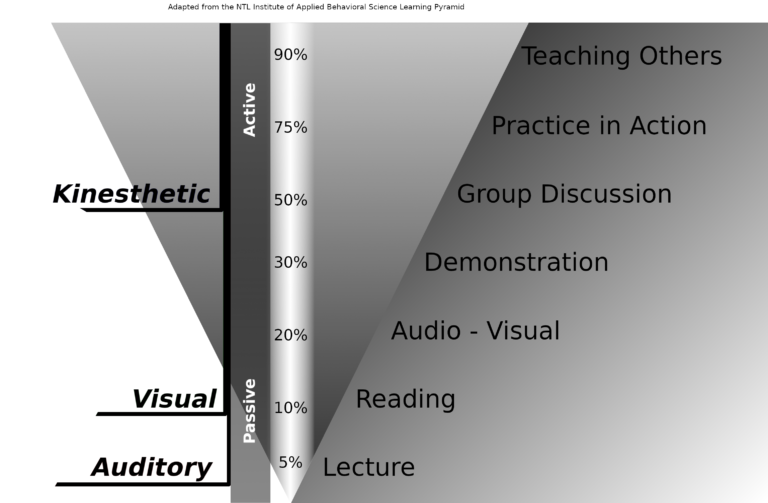
Many online courses include demonstrations, discussions or forums, and frequently, practice in action through independent assignments. Additionally, the pressure of having to jot down notes at the speed of the lecturer (which is most likely faster than the learner’s speed) vanishes as the student knows they can re-play the whole lecture in order to thoroughly grasp it. No worries about distractions like having to use the bathroom… stop your lecture until you are ready… cup of coffee and everything. No stress of beating the traffic rush to get to class on time, and especially no stress of wondering how your loved one(s) are faring throughout their difficulties of the day, they might be right next to you now… advancing also at lightning speed without being oppressed by bullies or getting mixed up in things that are possibly damaging.
Plan to learn and learn to plan

The X Axiom stipulates that using critical and creative thinking augments intelligence. From the basics of the standardized curriculum based on age to the subject matter itself: rethink education. Why is it expected that as of a certain young age most people should be done with school? Should we really ever identify as “done learning?” The statement itself sounds arrogant. In the last few decades certain critical occupations have required continuing education in order to keep licenses or other records active, and rightfully so. XSE can only be applied through a “growth mindset” and has no room or bearing for a “fixed mindset,” therefore in order to excel at it’s application a person must acknowledge that life is a journey of learning, whether or not you choose to make it that, and the only way to rise above “learning the hard way” is by appreciating opportunity and proactively seeking the truth in order to live a good life. Likewise, XSE trains the individual to think on their own 2 feet, and anything otherwise is equivalent of being controlled. Additionally, it is when a person who is truly free in their ability to seek truth and education is simultaneously able to create that their person begins to flourish and their potential begins to be revealed. This creativity can be expressed through unlimited forms, from planning the interior design of a room to a new invention.
The Y Axiom maintains that what resources are obtained (from the Z axis), after critical evaluation and creative thinking have been used to make informed decisions (X axis), then those decisions should be applied to your system, making sure that you are aware of the most sophisticated technology that you would be able to obtain in order to assist in maximum advancement of your system. This process is iterative as it should be done at the macro and micro level. In other words, not only would this apply to deciding which educational institutions to choose from and add to your educational plan, but likewise, once in the learning zone, the information itself should be processed iteratively leveraging to the XSE Axioms, with careful critical and creative thinking: “what information is substantial enough to be worthy of applying to your life?
The Z Axiom states that one should seek authentic and ultimate resources (restricted only by logical limitations). This generally means looking globally, and even beyond. When it comes to education, the best universities, academies and institutions will be in the pool of resources. But so will other sources, for instance, perhaps you understand some of the benefits of myofascial exercises and choose to add that in to your education for a time, even though that resource would possibly come from a doctor who is putting myofascial exercises on youtube. Or perhaps you have heard of the benefits of regular meditation, so you set aside a structured time daily to exercise meditation in hopes of increasing your brain’s thickness in the pre-frontal cortex and the parietal lobes.
So how might you apply XSE to education in your own life?

What may this look like in practice? Perhaps you have decided that in order to be able to work from home close to your family and be able to express your creativity in your everyday work as a career, you want to become an engineer (as you dreamed of when you were a child). You have determined to enroll in a masters program from University of Colorado, Boulder and will have to keep working at least part time in order to feed your family. This seems like a clear cut application of the Y axis principle as you have decided to achieve a new feat in life in line with your dreams, in order to be able to spend more time with your family and have a career where your creativity can flourish. You have hopefully analyzed your different potential routes of education to reach your goal and have chosen which course of action you want to take, fulfilling the Z axis principle. Now it is time for you to follow through with what you have determined to truly be the best decision for you and your family. Perhaps a change of diet is part of your plan, in order to optimize brain power. Maybe you have put time in your schedule for meditation before hitting classes each day, with hopes of better focus capability. Additionally you will evaluate whether any technology could possibly assist you in achieving your goal. Possibly you could use an audio reader for the hundreds of pages of reading that will be required, to listen and learn while you go on a walk, take a shower or clean your garage. Perhaps you learn about project management software and decide to start using it as practice and start seeing how it can help keep you on track and on schedule.
Is a new norm about to be realized?

With more jobs offering the flexibility of working from home, parents are realizing the ideal setup of being able to offer their children the most sophisticated education in the safety of their own home through the use of advanced technology and ivy league resources from around the globe. Not only are parents starting to work alongside their children as they learn, but many adults are finding that as technology advances at lightening speed, the only way to keep abreast is to make learning a way of life themselves alongside their children. How inspiring is this for young people to learn alongside their parents and for parents to be intimately involved in and the authority over what their children are learning? A person should never forget the fundamentals of education anyway, and if a child asks for help understanding how a cell works, if the parent can’t remember… a little refresher may lead the parent to dawn on a life-changing realization such as “the membrane of the cell is made of lipids… no wonder it’s recommended to eat only healthy fats… I’m making this change in our family’s diet today.” The basic building blocks of life should never be overlooked. The elementary is still essential and always will be.
Have children been underestimated?
Or does technology just make learning so much easier?

What happens when you open up a structured learning environment to a child, show enthusiasm for learning, and provide an example of education being integrated as a way of life at the heart of the home? Have we been so focused on getting them to school that we lose sight of teaching them the greatest lessons? When we warmly embrace and support them wholly: mind, body, and spirit, they are more likely to thrive and advance in all ways at greater speeds. We know how much it means to a child to be loved unconditionally and valued by their parents. What happens if you remove the stressful precursor of school starting daily as “hurry, we have to go or else you’ll be late” and replace that with a peaceful morning filled with anticipation of what may be accomplished intellectually and likewise, creatively applied throughout the day? Many Americans are now privileged enough to be able to work from home instead of having to meet the dreaded rush. Likewise, as learning is becoming an ongoing norm in society, it is becoming less affiliated with actual physical institutional environments. Therefore, many parents are discovering the peace and fulfillment of working and learning alongside their children throughout the day. Perhaps we can learn something from children too, as we witness their enthusiasm and excitement for learning independently and of their own free will. There’s little to compare to the joy of advancing alongside a child, soaking in their non-judgmental and simple spirit, that seems incapable of betrayal, either of themselves or of others, unless taught so by example or left to their own experimental means without any moral guidance or love.
Systems Engineering for children?

Teaching systems engineering to children at a young age can have several educational benefits. While the formal concepts and terminology of systems engineering may be too advanced for very young children, introducing basic principles and fostering a systems thinking mindset can be valuable. Here are some reasons why systems thinking can be beneficial for children:

While formal systems engineering concepts may be introduced gradually as children progress through their education, the principles of systems thinking can be integrated into various subjects and activities from an early age. Encouraging curiosity, exploration, and a holistic view of the world can lay the foundation for more advanced systems engineering concepts in later education.
Holistic Understanding: Systems thinking encourages a holistic understanding of how parts work together to form a whole. This approach helps children see connections and relationships in various subjects, promoting a more integrated understanding of the world.
Problem-Solving Skills: Systems engineering involves problem-solving and finding solutions to complex challenges. Introducing basic systems thinking can help children develop critical thinking and problem-solving skills by considering multiple factors and perspectives.
Interdisciplinary Learning: Systems thinking is inherently interdisciplinary, involving elements from various fields. Teaching children about systems can introduce them to concepts from science, technology, engineering, mathematics (STEM), and even social sciences, promoting a well-rounded education.
Real-world Application: Systems thinking emphasizes the practical application of knowledge to solve real-world problems. This approach helps children see the relevance of their learning and encourages them to apply their understanding to everyday situations.
Collaboration and Communication: Systems engineering often involves collaboration and effective communication. Introducing these concepts early can help children develop teamwork skills and improve their ability to communicate ideas and solutions.
Environmental Awareness: Systems thinking can foster environmental awareness by helping children understand the interconnectedness of natural systems. This understanding is crucial for developing an appreciation for the environment and promoting sustainable practices.
Adaptability and Flexibility: Systems thinking teaches children to consider dynamic interactions and adapt to changes. This skill is valuable in navigating an ever-changing world and preparing children for future challenges.
Underestimating a child's capability could cheat them out of reaching their potential

Children often demonstrate a seemingly enhanced ability to learn compared to adults, and this can be attributed to several factors related to their cognitive, emotional, and physiological development. Here are some reasons why it may be perceived as easier for children to learn:
Neuroplasticity: Children’s brains are highly plastic, meaning they are more adaptable and capable of forming new neural connections. This neuroplasticity allows them to acquire new skills and knowledge more rapidly than adults.
Absence of Preconceptions: Children often approach learning with a sense of curiosity and openness. They don’t carry the same preconceived notions or biases that can sometimes hinder adult learning. Their minds are more receptive to new information.
Rapid Brain Development: The early years of life are characterized by significant brain development. Neural pathways are formed and strengthened during this period, providing a strong foundation for various cognitive abilities.
High Levels of Energy and Enthusiasm: Children tend to have high levels of energy and enthusiasm, which can positively impact their engagement with learning. Their natural curiosity drives them to explore and understand the world around them.
Lack of Fear of Failure: Children often have a lower fear of failure compared to adults. They are more willing to take risks and try new things without the fear of making mistakes. This can foster a more positive and exploratory approach to learning.
Malleable Habits and Behaviors: Children are in the process of developing habits and behaviors, and they can more easily adopt new habits and routines. This adaptability can make it easier for them to incorporate learning into their daily lives.
Inherent Motivation: Children are naturally motivated to learn as they seek to understand their environment, interact with others, and gain independence. Intrinsic motivation can be a powerful driver for learning.
Social Learning: Children often learn from observing and interacting with others, including peers, siblings, and adults. Social learning provides additional avenues for acquiring knowledge and skills.
It’s important to note that while children may have advantages in certain aspects of learning, adults possess their own strengths, such as accumulated knowledge, life experiences, and the ability to apply critical thinking skills. The effectiveness of learning also depends on various individual factors, including motivation, learning styles, and the relevance of the material.
Additionally, the perception that children learn more easily may be influenced by the fact that their learning is often observed in the context of fundamental skills acquisition, language development, and exploration, which are natural and expected aspects of childhood development.
Early exposure to advanced learning opportunities, supportive environments, & individual motivation...

Synaptic pruning is one of the factors that contribute to the remarkable learning abilities observed in children. The process of synaptic pruning enhances the brain’s adaptability and learning efficiency during early development. Here’s how synaptic pruning could help explain why children seem to learn things quickly and easily:
Increased Plasticity: Synaptic pruning occurs during critical periods of brain development, when the brain is highly plastic and responsive to experiences. This increased plasticity allows for rapid learning and adaptation to the surrounding environment.
Efficient Information Processing: By eliminating unnecessary synapses, synaptic pruning refines neural circuits, making them more efficient in processing information. This optimization of neural connections enhances the speed and accuracy of signal transmission between neurons, contributing to faster learning.
Quick Adaptation to New Information: Children’s brains are adept at adapting to new information and experiences. Synaptic pruning allows the brain to selectively strengthen connections that are actively used, promoting rapid adaptation to novel stimuli and learning situations.
Flexibility in Learning: The elimination of redundant synapses and the refinement of neural circuits enhance cognitive flexibility. Children can more easily switch between tasks, acquire new skills, and absorb information from various domains due to the brain’s adaptable and flexible nature.
Language Acquisition: The early years of life are particularly crucial for language development. Synaptic pruning plays a role in fine-tuning the neural circuits responsible for language processing, contributing to the seemingly effortless acquisition of language skills in children.
High Sensitivity to Learning: Children are highly sensitive to learning during critical periods, and synaptic pruning supports this heightened sensitivity. The brain is actively shaping itself based on the child’s experiences, leading to efficient learning in various domains, including motor skills, social interactions, and academic subjects.
Optimal Neural Circuitry: The elimination of unnecessary synapses ensures that the remaining connections are optimized for efficient information processing. This optimal neural circuitry enables children to acquire and retain new information with relative ease.
It’s important to note that while synaptic pruning is a significant factor, other factors, such as genetic predispositions, environmental stimuli, and social interactions, also contribute to the rapid learning observed in children. The combination of these factors creates a developmental environment where children can acquire a wide range of skills and knowledge in a relatively short period.
The process of synaptic pruning, which significantly contributes to the remarkable learning abilities observed in children, has been extensively studied, shedding light on how it enhances the brain’s adaptability and learning efficiency during early development. Here are key insights from research that help explain why children seem to learn quickly and easily:
Synaptic Pruning and Neurodevelopmental Disorders: Neniskyte and Gross (2017) discuss the critical role of glial cells in synaptic pruning across various parts of the nervous system, highlighting its importance for the maturation of synaptic connections. Insufficient or excessive synaptic pruning is proposed to underlie neurodevelopmental disorders like autism, schizophrenia, and epilepsy, emphasizing the process’s significance in brain development (Nature Reviews Neuroscience, 18, 658-670).
Phagocytic Glial Cells and Synaptic Circuits: Schafer and Stevens (2013) underscore the unexpected roles of glial cells in synaptic pruning during the nervous system’s development. By engulfing synaptic and/or axonal elements, phagocytic glia eliminate subsets of synapses to refine synaptic connectivity, essential for the postnatal development of neural circuits (Current Opinion in Neurobiology, 23, 1034-1040).
Postsynaptic FMRP and Synaptic Pruning: Patel et al. (2014) demonstrate a specific form of connection pruning in the layer 5A neocortical network, indicating that connection frequency among pyramidal neurons decreases between the third and fifth postnatal weeks, a period of synaptic pruning. This study provides evidence for the critical role of postsynaptic factors in pruning, linked to conditions like fragile X syndrome (FXS) (The Journal of Neuroscience, 34, 3413-3418).
LTD-like Pathways in Developmental Synaptic Pruning: Piochon, Kano, and Hansel (2016) review evidence suggesting that long-term depression (LTD) and synaptic pruning share components of their molecular machinery. This overlap may represent stages of the same type of synaptic modulation serving different functions in neural circuit plasticity, with implications for understanding altered pruning in autism spectrum disorder (ASD) (Nature Neuroscience, 19, 1299-1310).
Roles of Autophagy in Synaptic Pruning: Lieberman, McGuirt, Tang, and Sulzer (2019) discuss how autophagy, a process for degrading cytosolic components and organelles, controls spine pruning in the mouse cortex. This mechanism contributes to activity-dependent regulation of synapse number, highlighting the role of both neuronal and non-neuronal cells in synaptic pruning (Neurobiology of Disease, 122, 49-63).
These studies collectively elucidate the mechanisms and importance of synaptic pruning in brain development, demonstrating its role in increasing plasticity, improving information processing efficiency, and allowing quick adaptation and flexibility in learning during critical periods of childhood.
Research has consistently shown that learning new languages is generally easier in childhood compared to adulthood. Here are some key findings:
Critical Period Hypothesis: One prominent theory is the Critical Period Hypothesis, which suggests that there is a biologically determined period during which language acquisition is most effective. This critical period is believed to extend from early childhood to puberty. After this period, the ability to acquire language declines.
Neuroplasticity: The brains of young children are highly plastic, meaning they are more adaptable and capable of forming new connections. Language learning involves creating and strengthening neural pathways, and this process is generally more efficient in the brains of children.
Accent Acquisition: Children tend to acquire native-like pronunciation and accents more easily than adults. This is often attributed to the plasticity of the vocal tract and auditory system during childhood.
Fear of Making Mistakes: Children are often less inhibited and more willing to take risks when learning a new language. They may be less afraid of making mistakes, which can be a significant factor in language acquisition.
Exposure and Immersion: Children are usually immersed in their native language environment from a very young age. This constant exposure and immersion contribute to a natural and intuitive understanding of language structures.
Cognitive Flexibility: While adults have cognitive advantages in other areas, children often exhibit greater cognitive flexibility, making it easier for them to switch between languages and adapt to new linguistic structures.
Social and Cultural Factors: Children are often more motivated by social factors, such as the desire to communicate with peers or fit into a social group. This motivation can enhance language learning.
It’s important to note that while these general trends exist, individual differences, motivation, and learning strategies also play crucial roles in language acquisition at any age. Some adults can become proficient language learners, and there are various successful language learning programs designed for adults.
Research highlights how learning new languages tends to be more effective during childhood compared to adulthood, with several studies supporting concepts like the Critical Period Hypothesis, neuroplasticity, and the unique advantages children have in language acquisition:
Critical Period Hypothesis: Johnson and Newport (1989) tested the hypothesis that language acquisition is most effective during a critical period extending from early childhood to puberty. Their findings support the conclusion that there is a clear advantage for individuals who start learning a second language earlier, with performance closely related to age of arrival up to puberty (Cognitive Psychology, 21, 60-99).
Accent Acquisition: Flege (1987) discusses the Critical Period Hypothesis in relation to second language pronunciation, highlighting the challenges adults face in achieving native-like pronunciation compared to children, whose neuroplasticity facilitates more natural accent acquisition (Applied Linguistics, 8, 162-177).
Neuroplasticity and Second Language Learning: DeLuca et al. (2019) explore how adult second language acquisition differs from childhood language learning, focusing on neurological evidence and the critical period’s implications for neuroplasticity and language learning efficiency (The Handbook of the Neuroscience of Multilingualism).
Fear of Making Mistakes: Snow and Hoefnagel-Höhle (1977) found that the ability to learn a foreign language and pronounce foreign sounds improves with age, challenging the strict interpretation of the Critical Period Hypothesis and suggesting that younger learners’ lack of fear of making mistakes may contribute to their success (Language and Speech, 20, 357-365).
These studies provide evidence supporting the idea that while children have unique advantages in learning languages due to factors like increased plasticity and less fear of making mistakes, the capacity for language learning exists across all ages, albeit with varying degrees of efficiency. The critical period hypothesis, neuroplasticity, and social-psychological factors like fear of error contribute to understanding why language learning is generally easier for children.
Learning computer coding is often compared to learning a new language. Both activities involve understanding and using a set of symbols, rules, and structures to communicate ideas. In programming, you learn a specific programming language (e.g., Python, Java, C++) that has its syntax and semantics, similar to how you would learn the grammar and vocabulary of a spoken language.
Here are some parallels between learning coding and learning a new language:
Syntax and Grammar: Programming languages have a specific syntax and grammar that you need to follow. Just like in a spoken language where sentence structure and grammar are essential, coding requires understanding the correct way to structure code.
Vocabulary: In programming, you use keywords, functions, and variables, which can be seen as the vocabulary of the language. Learning what these mean and how to use them is akin to learning new words in a spoken language.
Problem Solving: Both coding and language learning involve problem-solving skills. In coding, you need to think logically to solve problems and create algorithms, while in language learning, you apply problem-solving when trying to understand and communicate ideas.
Practice and Immersion: To become proficient, both coding and language learning require practice and immersion. The more you code or use a language, the more comfortable and skilled you become.
Cultural Context: Learning a language often involves understanding the cultural context in which it is used. Similarly, in coding, understanding the context and purpose of your code is crucial for effective programming.
However, it’s worth noting that while there are similarities, there are also differences. Coding is more structured and rule-based, and it involves problem-solving in a more abstract way. Additionally, programming languages are typically designed for specific tasks, while spoken languages are more versatile and used for a wide range of communication purposes.
The process of learning computer coding shares several parallels with learning a new language, involving understanding and using a set of symbols, rules, and structures to communicate ideas. Research and pedagogical approaches highlight these similarities, emphasizing syntax, vocabulary, problem-solving, and the requirement for practice and immersion. Here are some studies that reflect on these aspects:
Using Augmented Reality in Programming Learning: A systematic mapping study by Rios and Paredes-Velasco (2021) explores the use of augmented reality (AR) in programming education, noting that programming learning, akin to language learning, benefits from technologies that improve the way information is perceived and visualized, thereby facilitating the understanding of complex concepts (2021 IEEE Global Engineering Education Conference (EDUCON), pp. 1635-1641).
A Novel Introductory Programming Course: Barr (2023) describes an introductory course that takes a language-agnostic approach to teaching programming, similar to how one might learn the grammar and vocabulary of spoken languages, emphasizing the foundational concepts across different programming languages (Proceedings of 7th Conference on Computing Education Practice).
Gradually Learning Programming Supported by a Growable Programming Language: Cazzola and Olivares (2015) propose a method for teaching programming that aligns with how languages are learned—by gradually introducing new concepts, thus making the learning process less disorienting and more akin to acquiring a new spoken language (IEEE Transactions on Emerging Topics in Computing, 4, pp. 404-415).
The Language of Programming: A Cognitive Perspective: Fedorenko et al. (2019) explore the cognitive basis of programming, drawing parallels between programming and natural languages, suggesting overlapping processing mechanisms in the brain. This research underscores the importance of understanding programming within the broader context of human cognition and language learning (Trends in Cognitive Sciences, 23, pp. 525-528).
These studies and pedagogical approaches illustrate the conceptual overlap between learning programming and learning a new language, emphasizing the importance of syntax, vocabulary, and the cognitive processes involved in both activities. They highlight how the structured, rule-based nature of coding, coupled with the need for logical problem-solving and practice, mirrors the challenges and strategies associated with acquiring a new spoken language.
Learning a complicated computer program like Blender shares some similarities with learning a new language, but there are also significant differences. Here are ways in which learning Blender and learning a new language may be comparable:
Interface and Commands: Blender, like many complex software programs, has its own interface and set of commands. Learning how to navigate the interface, use tools, and execute commands is similar to familiarizing yourself with the syntax and commands of a new language.
Terms and Concepts: Just as learning a language involves understanding new terms and concepts, learning Blender requires grasping terminology related to 3D modeling, rendering, animation, and other features.
Skill Development: Both learning a language and learning Blender involve skill development. In the case of Blender, you develop skills related to 3D modeling, texturing, lighting, animation, and more. Similarly, language learning involves developing skills in listening, speaking, reading, and writing.
Practice and Repetition: Mastery in both language learning and Blender proficiency requires practice and repetition. The more you use Blender to create models, animations, or simulations, the more comfortable and skilled you become, just as with language practice.
However, there are notable differences:
Creativity vs. Communication: Learning Blender often involves expressing creativity through visual elements like 3D models and animations. On the other hand, learning a language is primarily about communication and expressing ideas through speech or writing.
Problem-Solving Nature: While both involve problem-solving, the nature of problem-solving in Blender is often more focused on visual and technical challenges related to 3D design and animation. Language learning problem-solving is more about communication and understanding linguistic nuances.
Structured vs. Open-Ended: Learning Blender is often more structured, with specific tools and techniques for different tasks. Learning a language can be more open-ended, involving creativity in how you express yourself within the boundaries of grammar and vocabulary.
In conclusion, while there are parallels, learning a complex computer program like Blender has its unique aspects compared to learning a new language. Both involve acquiring skills, practice, and familiarity with specific systems, but the nature of the skills and the goals differ.
Learning a complex computer program like Blender shares similarities with learning a new language in terms of understanding and utilizing a set of symbols, rules, and structures to communicate ideas. Here are studies and resources that delve into aspects of learning Blender and its parallels to language learning:
Blender Foundations: The Essential Guide to Learning Blender 2.6: Hess (2010) provides a comprehensive introduction to 3D art in Blender, covering the basics from the interface, modeling tools, sculpting, to lighting, and materials. This guide parallels learning a new language by starting with the foundational grammar and vocabulary, in this case, Blender’s interface and commands (Blender Foundations).
Visualization and Animation of Algorithmically Generated 3D Models: Rowe (2009) discusses creating 3D models in Blender using Python, showcasing the technical side of Blender akin to learning the syntax and grammar of programming languages (2009 First International Conference on Advances in Multimedia).
Extending Blender: Development of a Haptic Authoring Tool: Andrews et al. (2007) detail extending Blender’s capabilities, emphasizing the complexity and depth of learning Blender, similar to acquiring advanced skills in a new language (2007 IEEE International Workshop on Haptic, Audio and Visual Environments and Games).
BLAINDER—A Blender AI Add-On: Reitmann, Neumann, and Jung (2021) introduce an add-on for Blender that automates the generation of semantically annotated point-cloud data, illustrating the advanced applications and specialized vocabulary within Blender that mirrors the process of learning specialized terminology in a new language (Sensors (Basel, Switzerland)).
Building a 3D Game in Multiple Environments: Snodgrass and Kontostathis (2013) compare Blender and 3D Studio Max for first-time users, highlighting the learning curve and skill development required in mastering such software, akin to the gradual process of language acquisition (Journal of Computing Sciences in Colleges).
These resources underscore the parallels between learning Blender and a new language, from the basics of syntax and vocabulary to the development of specialized skills and problem-solving abilities. However, they also hint at the unique aspects of learning Blender, such as its emphasis on creativity and technical challenges, differing from the communicative and expressive nature of language learning.
The ability of some children to pursue college-level studies at a young age is often attributed to a combination of factors, including innate abilities, early exposure to advanced learning opportunities, supportive environments, and individual motivation. Here are some factors that may contribute to this phenomenon:
Intellectual Giftedness: Some children exhibit exceptional intellectual abilities from an early age. They may have a high level of cognitive processing speed, memory, problem-solving skills, and a natural aptitude for certain subjects.
Early Exposure to Learning: Children who are exposed to advanced learning opportunities from an early age may develop a strong foundation in various subjects. This exposure could come from supportive parents, mentors, or educational programs that recognize and nurture their talents.
Supportive Environment: Having a supportive and encouraging environment at home and in educational institutions is crucial. Parents, teachers, and mentors who recognize and foster a child’s potential can play a significant role in their academic development.
Individual Motivation: Intrinsic motivation and a genuine passion for learning can drive children to pursue advanced studies independently. Some children have a strong desire to delve into challenging subjects and may take the initiative to seek out opportunities for higher-level learning.
Flexible Education Systems: Some education systems provide flexibility for students to progress at their own pace. This might involve acceleration, grade skipping, or participation in dual enrollment programs that allow students to take college-level courses while still in high school.
Online Learning Platforms: The availability of online courses and learning platforms allows students to access college-level material from a young age. This flexibility enables them to study at their own pace and explore subjects beyond the traditional curriculum.
Parental Support: Supportive and involved parents can play a crucial role in facilitating a child’s advanced studies. Parents who are willing to invest time, resources, and effort into their child’s education can create an environment conducive to academic achievement.
It’s important to note that while some children excel in college-level studies at a young age, this path is not suitable for everyone. Each child is unique, and factors such as social and emotional development also play a role in determining the appropriateness of advanced educational experiences. Additionally, the well-being and balance of the child’s overall development should be considered.
The ability of some children to pursue college-level studies at a young age is indeed attributed to a combination of factors, including intellectual giftedness, early exposure to learning, a supportive environment, individual motivation, flexible education systems, online learning platforms, and parental support. Here are key findings and theories from various studies that elucidate these contributing factors:
Intellectual Giftedness and Educational Attainment: McLeod and Kaiser (2004) explored how childhood emotional and behavioral problems influence educational attainment, indirectly highlighting the role of cognitive abilities and emotional stability in achieving academic success. Their findings suggest that early intellectual capabilities and emotional well-being are critical for educational progression (American Sociological Review, 69, 636-658).
Early Exposure to Learning and College Completion: Larose et al. (2015) investigated the impact of personal and family factors in early life, as well as academic and social experiences in the first year of college, on college completion. Their longitudinal study underscores the importance of early academic records and social behaviors in predicting college enrollment and completion (International Journal of School & Educational Psychology, 3, 143-156).
Supportive Environment and STEM Career Development: Tuijl and Molen (2015) reviewed literature on children’s study choices and career development in STEM fields, pointing out the need for knowledge, affective value, and ability beliefs to be nurtured from a young age. This aligns with the idea that a supportive environment, including encouragement from parents and teachers, is crucial for fostering interest and success in advanced academic pursuits (International Journal of Technology and Design Education, 26, 159-183).
Individual Motivation and Educational Outcomes in Childhood-Onset Chronic Illness: Maslow et al. (2012) explored how protective factors like mentoring and school connectedness influence educational attainment among young adults with childhood-onset chronic illness. This study highlights the role of individual motivation and supportive relationships in overcoming challenges to achieve academic success (The Journal of school health, 82 8, 364-70).
Flexible Education Systems and Siblings’ College Choices: Goodman et al. (2015) examined how siblings’ college choices influence each other, suggesting that family and educational systems that allow for flexibility and support can lead to higher rates of college attendance. This research underscores the importance of an adaptable education system in facilitating advanced studies for young learners (Economics of Education Review, 48, 75-85).
These studies collectively suggest that early intellectual abilities, exposure to learning opportunities, a supportive environment, individual motivation, and flexible educational pathways play significant roles in enabling some children to engage in college-level studies at a young age.

A Blueprint for the love of learning
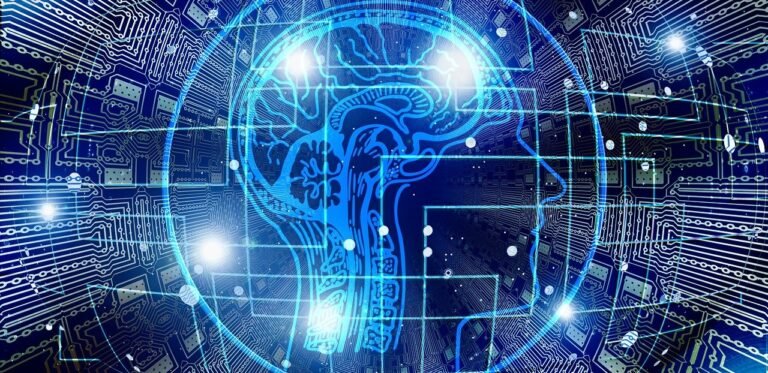
Understanding where a particular subject fits into the grand scheme of things and how it connects to other subjects can significantly enhance a child’s or person’s ability to open their mind, learn, and comprehend. Here are several ways in which this broader understanding can be beneficial:
Contextual Relevance:
- Knowing how a subject fits into the broader context of knowledge and real-world applications provides context and relevance. It helps learners see the practical significance of what they are studying, making the subject matter more engaging and meaningful.
Interdisciplinary Connections:
- Recognizing how a subject relates to other disciplines encourages interdisciplinary thinking. Many real-world problems and challenges require a multifaceted approach, and understanding the connections between subjects enables individuals to draw upon diverse knowledge to solve complex issues.
Holistic Understanding:
- Viewing a subject in relation to others contributes to a holistic understanding. It allows learners to see the bigger picture and understand the interdependencies between different areas of knowledge. This holistic perspective fosters a deeper and more integrated comprehension of the subject matter.
Critical Thinking Skills:
- Understanding the connections between subjects encourages critical thinking. It prompts individuals to question, analyze, and evaluate information from various angles, promoting a more nuanced and sophisticated approach to problem-solving.
Transferrable Skills:
- Recognizing the broader implications of a subject often reveals transferrable skills. Many concepts and skills learned in one area can be applied to other fields. This understanding promotes versatility and adaptability in learning, as individuals can leverage their knowledge across different contexts.
Motivation and Curiosity:
- Knowing how a subject connects to other disciplines can ignite curiosity and motivation. It fosters a sense of wonder about the interconnectedness of knowledge, encouraging learners to explore related areas and develop a more comprehensive understanding of the world.
Real-World Applications:
- Understanding the practical applications of a subject in real-world scenarios enhances its significance. Learners are more likely to be motivated to engage with a subject when they can see how it contributes to solving real problems or improving aspects of daily life.
Global Awareness:
- Recognizing the global implications of a subject promotes global awareness. Understanding how a subject is relevant on a global scale encourages learners to consider diverse perspectives, appreciate cultural differences, and engage with a broader community of knowledge.
In summary, understanding where a subject fits into the grand scheme of things and how it connects to other subjects provides a richer and more meaningful learning experience. It fosters a mindset of exploration, curiosity, and interconnected thinking, which are crucial attributes for lifelong learning and success in various areas of life.
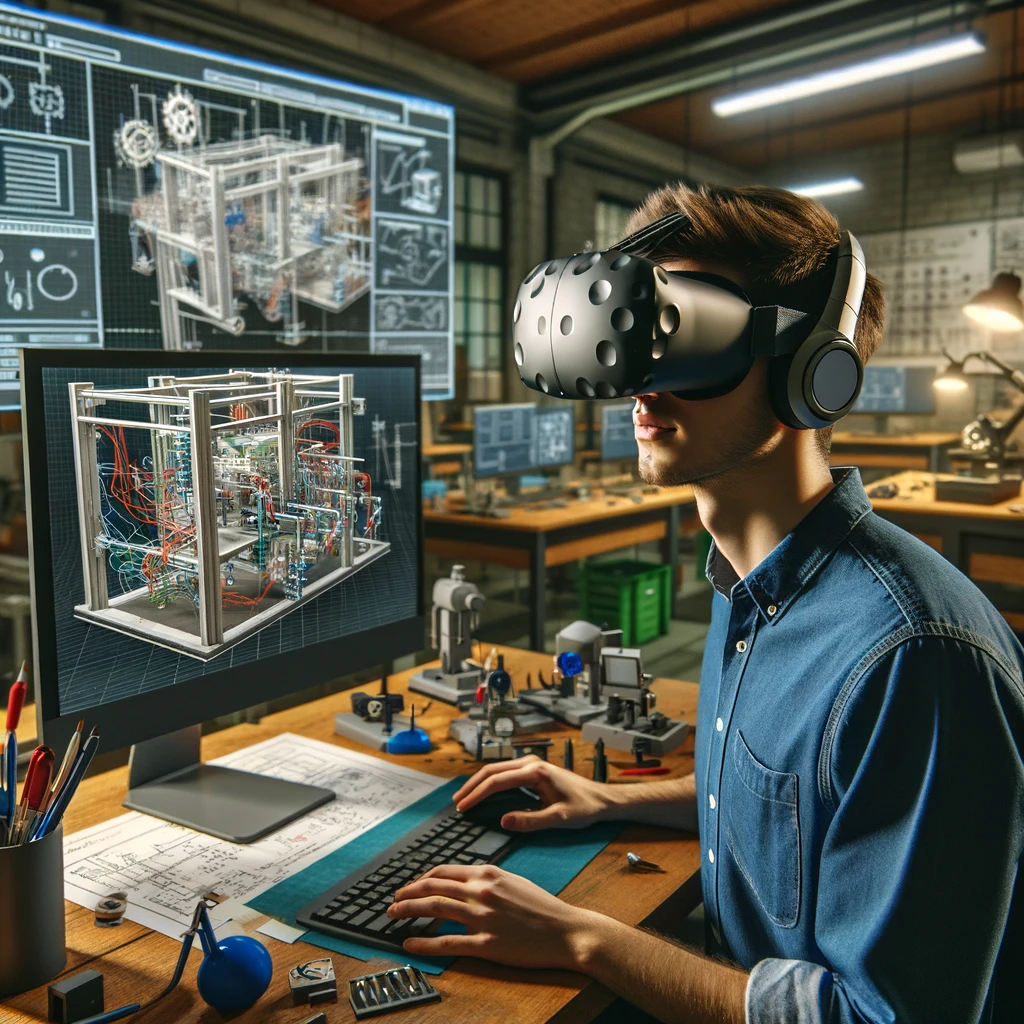
Understanding the interdisciplinary nature of learning and its impact on cognitive development and comprehension is supported by various studies emphasizing the importance of contextual relevance, interdisciplinary connections, and holistic understanding. Here are several key findings from research that highlight these aspects:
A Creative Model for Interdisciplinary Approach to Service-Learning: Marx, Glaser, Moran, and Tucker (2021) discuss the benefits of service-learning in courses, emphasizing interdisciplinary collaboration to meet community needs and enrich course content. This approach highlights the contextual relevance and interdisciplinary connections in learning, demonstrating how integrating knowledge from multiple disciplines can enhance student learning and community engagement (Integrative and comparative biology, 2021).
Improving the Culture of Interdisciplinary Collaboration in Ecology: Goring et al. (2014) explore the importance of interdisciplinary collaboration in ecology, underlining how diverse knowledge and perspectives are essential for addressing complex environmental issues. The study suggests that interdisciplinary thinking and collaboration can significantly contribute to innovative solutions, emphasizing the value of understanding how different disciplines connect and impact real-world problems (Frontiers in Ecology and the Environment, 2014).
Interdisciplinarity and Argumentation in Chemistry Education: Crujeiras-Pérez and Jiménez-Aleixandre (2019) discuss the benefits of interdisciplinary learning in chemistry education, particularly in developing argumentation skills set in real-life contexts. The integration of knowledge from different disciplines is shown to enhance critical thinking and problem-solving abilities, further supporting the idea that interdisciplinary connections contribute to a deeper and more holistic understanding of subjects (Argumentation in Chemistry Education, 2019).
These studies collectively emphasize the significant benefits of a broader understanding of subjects in relation to one another, promoting cognitive flexibility, interdisciplinary thinking, and holistic learning. By recognizing the interconnectedness of knowledge, learners can develop a richer, more comprehensive understanding of subjects, enhancing their ability to apply learning in diverse and complex real-world scenarios.

As shown below, each subject builds upon the previous underlying subject, and humanities connects back to the foundational subjects of Logic and Philosophy.

There isn’t a universally agreed-upon hierarchy of domains of study, and the relationship between different fields can vary based on perspectives and contexts. However, some individuals and philosophers of science have proposed hierarchical structures that emphasize foundational disciplines. It’s important to note that these structures are not absolute, and interdisciplinary connections are common.
One classical view, often associated with the idea of a “hierarchy of sciences,” places foundational disciplines at the base. Here’s a simplified example:
Philosophy and Logic: Some argue that philosophy, particularly logic, forms the foundation for all knowledge. Logic is considered fundamental to reasoning and critical thinking, providing a framework for constructing valid arguments.
Mathematics: Mathematics is often considered a fundamental language for expressing relationships and patterns. It provides a structured and precise framework for modeling various phenomena.
Physics: Physics is sometimes seen as a fundamental science that studies the fundamental principles governing the natural world. It often relies heavily on mathematical formulations to describe physical phenomena.
Chemistry and Earth Sciences: Chemistry studies the properties and interactions of matter. Fields like geology, meteorology, and environmental science may be considered as building upon physics.
Biology and Life Sciences: Biology focuses on living organisms. These fields are often built upon principles established by physics. These fields are often built upon physical and chemical principles.
Psychology and Social Sciences: Social sciences, such as psychology, sociology, and economics, study human behavior and societal structures. These fields may draw on principles from the natural sciences and mathematics.
Humanities: Humanities, including literature, philosophy, and history, explore aspects of human culture, expression, and thought. They may draw on insights from various scientific and social science disciplines.
It’s important to recognize that this hierarchy is a simplification and doesn’t capture the full richness of interdisciplinary connections. Additionally, contemporary approaches to knowledge often emphasize the importance of integration and collaboration across disciplines.
Fields of study often overlap, and advancements in one area can lead to new insights in another. Interdisciplinary research and collaboration are increasingly valued, as they allow for a more holistic understanding of complex phenomena. The relationships between domains of study are dynamic and can evolve over time as knowledge advances.
If the spirit soars, the body & mind are more likely to thrive.

Several studies have investigated the impact of spiritual health on mental and physical well-being, underscoring the positive effects of spiritual well-being on various aspects of health. Here are some key findings from research in this area:
Spiritual Well-being and Depressive Symptoms: A study examined the influence of spirituality, including religious and existential well-being, on depressive symptoms among African American female suicide attempters. It found that greater religious and existential well-being was related to more optimism, less pessimism, and, in turn, to fewer depressive symptoms. This suggests that spiritual well-being can have a beneficial effect on mental health by influencing cognitive-emotional functioning (Hirsch et al., 2014).
Religion, Spirituality, and Physical Health in Cancer Patients: A meta-analysis on the relationship between religion/spirituality (R/S) and patient-reported physical health in cancer patients found that greater R/S is associated with better patient-reported physical health. This underscores the importance of attending to patients’ religious and spiritual needs as part of comprehensive cancer care (Jim et al., 2015).
Religious Involvement, Spirituality, and Medicine: This review suggests that religious involvement and spirituality are associated with better health outcomes, including greater longevity, coping skills, and health-related quality of life, as well as less anxiety, depression, and suicide. Several studies have shown that addressing the spiritual needs of the patient may enhance recovery from illness (Mueller, Plevak, & Rummans, 2001).
Spirituality, Purpose in Life, and Well-Being in HIV-Positive Persons: Research has shown that spirituality has a positive effect on mental and physical health. This study aimed to examine the relationship between spirituality, purpose in life, and well-being in a sample of HIV-positive men and women, finding that spirituality was significantly correlated with purpose in life but not directly with well-being (Litwinczuk & Groh, 2007).
These studies contribute to the understanding that spiritual well-being is intricately linked to both mental and physical health, offering a holistic view of health that encompasses the body, mind, and spirit.

These sources contribute to the understanding of spirituality’s multifaceted role in both educational and professional settings, indicating its potential to influence ethical behavior, decision-making processes, and cognitive functions such as creativity.
On Spirituality and Education: Hogan, M. (2009). It is a mistake to ignore the scientific study of spirituality. The discussion in “On Spirituality and Education” suggests that integrating the study of spirituality into scientific and educational frameworks can provide valuable insights into how spirituality relates to cognitive processes and creativity. This perspective is detailed in the article published in the journal Thinking Skills and Creativity, Volume 4, Pages 138-143. The article emphasizes the potential for spirituality to contribute positively to educational outcomes and psychological well-being.
The Relationship Between Spiritual Well-Being and Ethical Orientations in Decision Making: Fernando, M., & Chowdhury, R. M. M. I. (2010). This study examines the link between spiritual well-being and ethical decision-making in the context of Australian business executives. It suggests that individuals with a high level of spiritual well-being are more likely to exhibit ethical behavior in their professional lives. The research highlights spirituality’s role in shaping moral and ethical orientations, suggesting that spiritual well-being can be a critical factor in ethical business practices. The findings are published in the Journal of Business Ethics, Volume 95, Pages 211-225.
The results are yet to be seen...

There are reports that upon opening up children’s education to the level of sophistechnication, learning in spiritually healthy environments with technology at their fingertips at very young ages, children are independently and proactively consuming education with excitement, while at the same time, passionately applying it creatively in real-life. We are not just speaking of small differences from traditional educational levels compared to sophistechnication, we are speaking of Kindergarteners easily passing second and third grade material and pre-schoolers mastering first grade skills and confidently maneuvering their way around complex 3D modeling software programs (like Blender*), expressing themselves through 3D artistic creations and even producing computer animations. Where will these children be intellectually by age 10? How many PhD’s might they have by age 21?

Blender is a powerful and versatile open-source 3D computer graphics software. It is used for creating animated films, visual effects, 3D games, and more. Blender provides a comprehensive suite of tools for 3D modeling, texturing, rendering, animation, sculpting, compositing, and even video editing. Here are some key features of Blender:
3D Modeling: Blender allows users to create detailed 3D models using various modeling techniques, including polygonal modeling, sculpting, and parametric modeling.
Texturing and Materials: Users can apply textures and materials to 3D models to enhance their appearance. Blender supports a wide range of materials and texture mapping options.
Animation: Blender has a robust animation system, enabling users to create complex animations with keyframes, rigging, and character animation tools.
Rendering: The software includes a powerful rendering engine that can produce high-quality images and animations. Users can control lighting, shadows, and other rendering parameters.
Sculpting: Blender features a sculpting mode that allows artists to shape and manipulate digital clay, making it suitable for character modeling and organic shapes.
Simulation: It includes simulation tools for physics-based animations, such as fluid dynamics, smoke, fire, and soft/rigid body dynamics.
Compositing: Blender has a node-based compositor for post-processing effects and combining multiple elements into a final image or animation.
Game Development: While not as specialized as some game engines, Blender includes game development features, allowing users to create and export games.
Video Editing: Blender has a built-in video sequence editor (VSE) that enables users to edit videos and add effects within the same software.
One notable aspect of Blender is that it is open-source and free to use, making it accessible to a wide range of users, including professionals, hobbyists, and students. Its active community contributes to its continuous development and improvement. Blender supports various platforms, including Windows, macOS, and Linux.
The difficulty of learning Blender can vary depending on your background, prior experience with 3D software, and your specific goals. Here are some factors to consider:
Prior Experience: If you have experience with other 3D modeling or animation software, you may find some concepts in Blender to be familiar, which can make the learning process easier. However, if you are completely new to 3D graphics, there will be a learning curve.
User Interface: Blender has a unique interface that might be different from other 3D software. Some users find the interface initially challenging, but with practice, it becomes more intuitive. Blender’s interface is designed to be efficient once you become accustomed to it.
Versatility: Blender is a comprehensive software with a wide range of features for modeling, animation, rendering, and more. While this versatility is powerful, it can also make the software seem overwhelming for beginners. Learning to navigate and utilize the specific features you need can take time.
Community and Resources: Blender has a supportive and active community. There are plenty of tutorials, documentation, and forums where you can seek help and guidance. The availability of resources can significantly impact the ease of learning.
Practice and Patience: Like any complex software, becoming proficient in Blender requires practice and patience. The more you work with it, the more comfortable you will become. Experimenting with different tools and features is key to gaining confidence.
If you are a beginner, it might be helpful to start with basic tutorials and gradually move on to more advanced topics as you become familiar with the software. Blender’s learning curve tends to be steeper at the beginning, but many users find that it becomes more manageable with consistent practice.
Overall, while Blender may be challenging initially, it is a powerful tool with a wealth of capabilities. Many artists and professionals use Blender for their 3D projects, and with dedication and practice, you can develop the skills needed to create impressive work.
There is a common perception that children can learn certain skills, including using technology and software like Blender, more quickly than adults. This idea is often attributed to factors such as cognitive flexibility, adaptability, and a willingness to explore without preconceived notions.
Here are some factors that might contribute to the notion that kids can learn Blender faster than adults:
Fearlessness in Exploration: Children tend to be more curious and less afraid of making mistakes. They might explore the features of Blender more freely, which can lead to faster learning through experimentation.
Cognitive Plasticity: The brain’s ability to adapt and change, known as cognitive plasticity, is often thought to be more pronounced in children. This adaptability can contribute to quicker learning in new environments, including learning complex software.
Less Preconceived Notions: Children may approach learning Blender without preconceived notions or expectations, making them more open to new concepts and workflows.
Immersive Learning: Children may have more time for immersive learning experiences, as they may not have as many competing priorities as adults. Immersion is often key to quickly picking up new skills.
However, it’s important to note that individual differences play a significant role. Some adults may find learning Blender just as quick or even quicker than some children, depending on their background, prior experiences, and learning styles.
Adults can leverage their existing knowledge, problem-solving skills, and discipline to approach learning Blender systematically. They may also bring a level of focus and goal-oriented learning that can lead to efficient progress.
In conclusion, while there might be some advantages for children in terms of exploration and adaptability, individuals of any age can learn Blender effectively with the right approach, resources, and dedication. The most important factors are motivation, practice, and a willingness to learn.
The notion that children can learn certain skills, including using technology and software like Blender, more quickly than adults is supported by research emphasizing cognitive flexibility, adaptability, and exploration. Here are insights from studies that contribute to understanding this phenomenon:
Children, Wired: For Better and for Worse: Bavelier et al. (2010) discuss how children’s interaction with technology, including video games and the internet, plays a role in their development. The study suggests that technology can act as exemplary learning tools, enhancing various abilities through engagement and interaction, underlining the importance of cognitive flexibility and adaptability in children (Neuron, 67, 692-701).
Experience-dependent Structural Plasticity in the Adult Human Brain: May (2011) highlights the concept of lifelong brain plasticity, documenting how novel experiences and learning new skills modulate brain function and neuroanatomic circuitry. This research supports the idea that while adults also exhibit plasticity, the pronounced nature of this trait in children contributes to their rapid learning capabilities (Trends in Cognitive Sciences, 15, 475-482).
Training Attentional Control in Infancy: Wass et al. (2011) demonstrate that even infants can undergo training that improves cognitive control and attention, indicating that the brain’s capacity for learning and adaptation is present from a very early age. This suggests that the mechanisms allowing children to learn quickly are rooted deeply in developmental stages (Current Biology, 21, 1543 – 1547).
Digital Learning As Enhanced Learning Processing? Cognitive Evidence for New insight of Smart Learning: Di Giacomo et al. (2017) analyze the impact of digital technology on children’s cognition, suggesting that digital exposure may enhance cognitive processing, thereby facilitating quicker learning in environments like Blender (Frontiers in Psychology, 8).
White Matter Structure Changes as Adults Learn a Second Language: Schlegel et al. (2012) explore structural plasticity in adults learning a second language, indicating that while adults can adapt and learn, the process in children, due to their heightened neural plasticity, might be more efficient (Journal of Cognitive Neuroscience, 24, 1664-1670).
These studies collectively support the view that children’s brains, characterized by heightened plasticity and a fearless approach to exploration, enable them to learn complex skills like Blender with apparent ease compared to adults. While individual differences are significant, the foundational cognitive and neural mechanisms suggest a unique advantage for children in learning new technologies.
Virtual Reality in Education
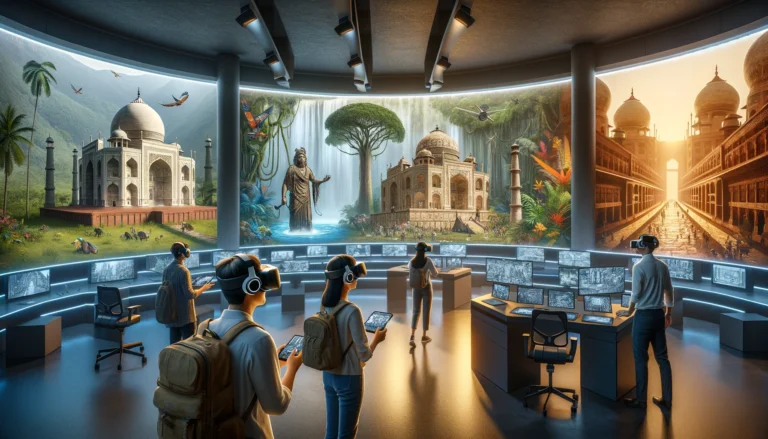
The development and utilization of virtual reality (VR) in education, particularly in immersive learning experiences and character strength development, are supported by various studies that highlight its effectiveness and potential benefits. Here are some studies that provide insights into the proposed effectiveness of VR-based educational platforms similar to -X-Skyway:
Virtual Reality for Health Professions Education: A systematic review and meta-analysis that evaluated the effectiveness of VR in educating health professionals, showing improvements in knowledge and skills outcomes compared to traditional and other types of digital education. This indicates VR’s potential for interactive learning environments and skill-building simulations (Kyaw et al., 2019, Journal of Medical Internet Research).
Evaluating the Effectiveness of Learning Design with Mixed Reality (MR) in Higher Education: This study found that MR improves students’ abilities in geometric analysis and creativity significantly, suggesting the value of VR/MR in fostering character strength development and enhancing learning effectiveness (Tang et al., 2020, Virtual Reality).
Effectiveness of Virtual Reality in Nursing Education: A meta-analysis showing VR’s effectiveness in improving knowledge in nursing education, which can be extrapolated to the potential of VR in enhancing educational outcomes in various disciplines (Chen et al., 2020, Journal of Medical Internet Research).
Learning Effectiveness of 360° Video: This study provides evidence for the effectiveness of VR technologies like 360° video in enhancing learning experiences, which supports the use of immersive VR for educational content delivery in -X-Skyway (Ulrich et al., 2019, Interactive Learning Environments).
A Structural Equation Modeling Investigation of the Emotional Value of Immersive Virtual Reality in Education: This study explores how immersive VR impacts perceived learning outcomes through emotional engagement, highlighting the importance of immersive VR in education and character strength development (Makransky & Lilleholt, 2018, Educational Technology Research and Development).
These studies collectively underscore the potential of VR, similar to the envisioned -X-Skyway platform, in revolutionizing educational practices by providing immersive learning environments, enhancing skill development, and fostering character strength through interactive and engaging experiences.
Virtually Unlimited Potential
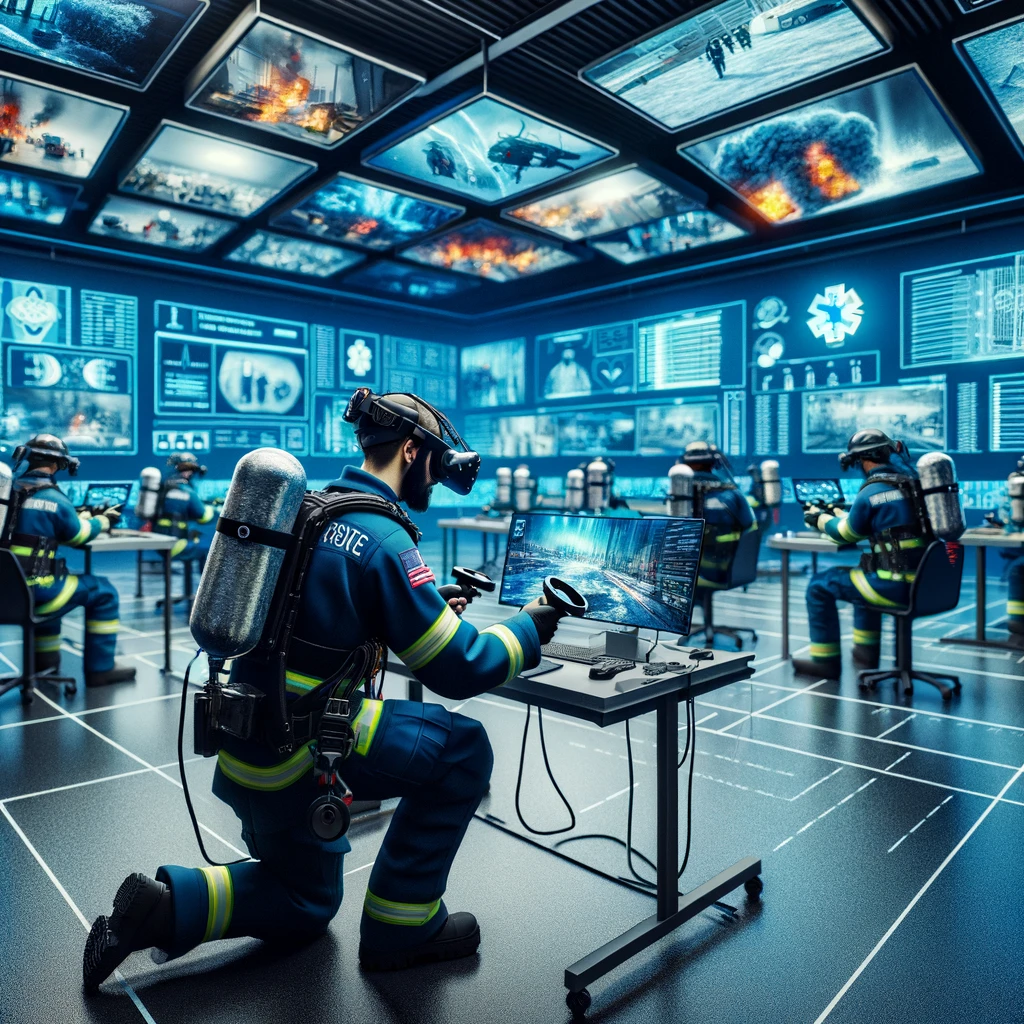
Let’s consider some strategic ways VR experiences can be used for the benefit of all people, leveraging its immersive and impactful nature:
Education and Lifelong Learning: VR can revolutionize education by offering immersive learning experiences that transcend traditional classroom boundaries. It can simulate historical events, scientific phenomena, and cultural explorations, providing students with a deeper understanding of subjects. For example, VR field trips to historical sites or galaxies far away can make learning more engaging and accessible to students regardless of geographical constraints.
Healthcare and Therapy: VR has shown promising results in treating various health conditions, including PTSD, anxiety, and phobias, by providing controlled environments where patients can confront and learn to manage their conditions. Furthermore, VR can be used for surgical training, offering medical professionals a risk-free environment to practice procedures, which can ultimately improve patient outcomes.
Environmental Awareness and Conservation: VR experiences that showcase the beauty of nature and the impact of climate change can foster a deeper understanding and appreciation for the environment. By virtually experiencing the effects of deforestation, ocean pollution, or endangered species’ habitats, individuals may be more motivated to engage in conservation efforts and sustainable practices.
Cultural Exchange and Understanding: VR can bridge cultural gaps by offering immersive experiences that showcase different cultures, traditions, and perspectives. This can foster empathy, reduce prejudice, and promote a more inclusive society by allowing people to “walk in someone else’s shoes” and experience life from a different cultural viewpoint.
Workforce Training and Skill Development: Beyond traditional education, VR can be used for vocational training and skill development across various industries. By simulating real-world job environments, VR can prepare individuals for specific roles, enhancing job readiness and improving employment prospects, especially for underserved communities.
Accessibility for Disabled Individuals: VR can create experiences tailored to the needs of individuals with disabilities, offering them opportunities to engage in activities that might be challenging in the real world. Whether it’s virtual travel, participation in sports, or experiencing art and music, VR can enhance the quality of life and provide new avenues for enjoyment and exploration.
Public Safety and Emergency Preparedness: VR can be used for training civilians and professionals in emergency response scenarios, such as natural disasters, medical emergencies, or fire evacuations. By simulating these situations, individuals can learn how to react effectively in real emergencies, potentially saving lives.
Aging and Elderly Care: For the elderly, especially those with mobility issues or cognitive impairments, VR can offer stimulating experiences, social interaction, and cognitive training. VR can help maintain mental acuity, reduce feelings of isolation, and improve overall well-being among older adults.
These ideas represent just the beginning of what’s possible with VR technology. As VR continues to evolve, its integration with other innovations will undoubtedly lead to even more creative and impactful applications, ultimately contributing to a better world for all.
Learning Physically Changes the Brain
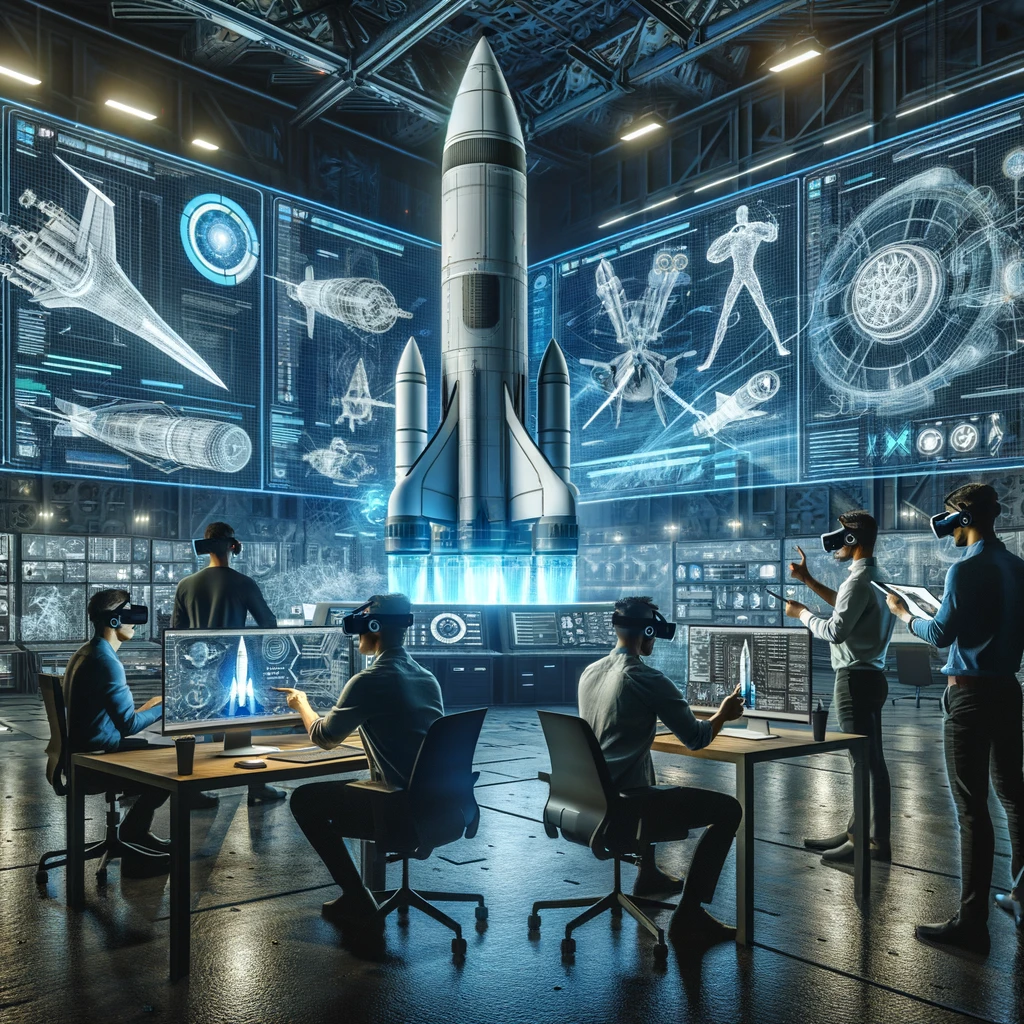
Learning physically changes the brain in profound ways, as evidenced by numerous studies that explore neuroplasticity, the brain’s ability to reorganize itself by forming new neural connections throughout life. Here are some key findings from research on how learning impacts brain structure and function:
Molecular Biology of Memory Storage: Kandel’s (2001) seminal work discusses how learning and memory are facilitated by specific molecular activities within identified nerve cells, highlighting the dialogue between genes and synapses during the learning process. This foundational study emphasizes the cellular and molecular underpinnings of how learning modifies behavior and brain function (Science, 294, 1030-1038).
Learning and Brain Structure Changes: Lee et al. (2007) discovered that learning a new language leads to structural changes in the brain, specifically in the gray matter density of the posterior supramarginal gyri. This study provides direct evidence that cognitive and linguistic learning experiences can induce anatomical changes in the brain (The Journal of Neuroscience, 27, 1184-1189).
Skill Learning and Motor Cortex: Karni et al. (1998) explored how practicing a sequential finger opposition task led to performance improvements and changes in the primary motor cortex. Their findings indicate that skill learning is mediated by experience-driven changes within specific neural representations (Proceedings of the National Academy of Sciences of the United States of America, 95 3, 861-8).
Vocabulary Acquisition and Brain Structure: Woollett and Maguire (2011) found that learning “The Knowledge” of London’s layout (an extensive training taxi drivers undergo) leads to structural brain changes, particularly in the posterior hippocampi. This study underscores the brain’s capacity to undergo structural changes in adulthood in response to learning (Current Biology, 21, 2109-2114).
White Matter Changes in Language Learning: Schlegel et al. (2012) documented white matter structure changes in adults learning a second language, demonstrating that learning affects not only gray matter but also white matter architecture. This highlights the role of plasticity in the brain’s white matter in response to cognitive learning (Journal of Cognitive Neuroscience, 24, 1664-1670).
These studies collectively illustrate the dynamic nature of the brain and its ability to adapt structurally and functionally to learning experiences across a lifetime. They highlight the importance of continued learning and cognitive engagement in promoting brain health and plasticity.
Think your "filing cabinet" is full?

The studies on how learning changes the brain suggest that the human brain has the remarkable capacity to adapt and reorganize itself to accommodate new information, rather than operating on a fixed capacity that requires old information to be forgotten to make way for the new. This capacity is due to the phenomenon of neuroplasticity, which encompasses both structural and functional changes in the brain in response to learning and experience.
Here’s how the evidence supports this understanding:
-
Structural Brain Changes: Research showing structural changes in the brain, such as increases in gray matter density in specific areas related to learning new skills or languages, indicates that the brain physically adapts to handle new information (Lee et al., 2007); (Woollett & Maguire, 2011). These changes do not imply the displacement of existing knowledge but rather an expansion of capacity.
-
White Matter Reorganization: Studies documenting changes in white matter structure with learning, such as those seen in adults acquiring a second language, suggest that the brain’s connectivity is also plastic, enhancing its ability to process and integrate new information without necessarily sacrificing old information (Schlegel et al., 2012).
-
Increased Efficiency and Resource Allocation: Some theories suggest that as individuals become proficient in certain tasks or areas of knowledge, the brain becomes more efficient in how it processes related information. This efficiency could free up cognitive resources to learn and store new information, rather than necessitating the forgetting of old information.
-
Functional Plasticity: The brain’s ability to reassign functions to different neural circuits in response to learning or injury shows that it has a dynamic capacity to reorganize itself functionally. This adaptability supports lifelong learning and the continuous integration of new experiences and knowledge.
In summary, rather than a strict trade-off where new information displaces the old, the brain’s response to learning involves complex processes of growth, reorganization, and increased efficiency, allowing for the accumulation of knowledge over a lifetime. These mechanisms underscore the vast potential of the human brain to adapt and expand its capacities in response to continuous learning and environmental demands.
Think Again...

The research supports the notion that the human brain can increase its efficiency and resource allocation through learning, which may enhance the capacity to assimilate new information without necessarily forgetting old information. Here are key studies illustrating these concepts:
Efficiency and Resource Allocation: The study by Langer et al. (2013) on “The effects of working memory training on functional brain network efficiency” demonstrates how working memory training can improve the efficiency of the brain’s functional network, suggesting that cognitive training may enhance the brain’s processing efficiency, potentially freeing up resources for new learning (Cortex, 49, 2424-2438).
Functional Plasticity: Pascual-Leone et al. (2005) discuss “The plastic human brain cortex,” highlighting the brain’s intrinsic property of plasticity, which allows for functional reorganization in response to learning or injury. This adaptability underpins the brain’s capacity for lifelong learning and the integration of new experiences (Annual review of neuroscience, 28, 377-401).
Learning-Induced Brain Changes: Karni & Bertini (1997) in their work on “Learning perceptual skills: behavioral probes into adult cortical plasticity,” reveal that perceptual learning induces specific changes in the adult cortex, emphasizing that the acquisition of new skills retains a behaviorally relevant degree of plasticity in the adult brain (Current Opinion in Neurobiology, 7, 530-535).
Neurogenesis and Brain Plasticity: The exploration by Gu, Janoschka, and Ge (2013) on “Neurogenesis and hippocampal plasticity in the adult brain” discusses how continuous generation of neurons in the adult hippocampus extends early developmental plasticity into adulthood, supporting the brain’s capacity for lifelong learning and adaptation (Current topics in behavioral neurosciences, 15, 31-48).
These studies collectively suggest that the human brain does not simply replace old information with new learning. Instead, through processes like increased neural efficiency, resource allocation, and functional plasticity, the brain can expand its capacity to accommodate new information, supporting the concept of lifelong learning and cognitive growth.
Don't ever stop taking care of and working your brain.

Continuing education in elderly years has been shown to have significant benefits for life, health, longevity, mental acuity, among other aspects. Here are several studies highlighting these advantages:
Motivations and Perceived Benefits of Older Learners in a Public Continuing Education Program: Influence of Gender, Income, and Health: This study explored older adults’ motivations for and perceived benefits from participating in continuing education, highlighting its role in promoting successful and active aging. The findings emphasize the importance of maintaining and developing affordable and accessible continuing education programs in local communities (Narushima, Liu, & Diestelkamp, 2013).
More than nickels and dimes: the health benefits of a community‐based lifelong learning programme for older adults: This study of a lifelong learning program for seniors run by a school board in Ontario shows how later-life learning in non-vocational, general interest subjects contributes to health and well-being at the individual and community levels. Such programs can play a vital role in retirees’ lives, especially for those at risk, suggesting the need for further research to measure learning’s impact on health (Narushima, 2008).
THE IMPACT OF CONTINUING EDUCATION ON THE HEALTH OF OLDER ADULTS: This study showed varying effects of continuing education on the health of older adults. Participation in continuing education had significant positive outcomes on depression, social satisfaction, and symptoms of aging, indicating that engagement in learning activities can enhance certain health aspects of older adults (Panayotoff, 1993).
I Learn, Therefore I am: A Phenomenological Analysis of Meanings of Lifelong Learning for Vulnerable Older Adults: This study explores the lifelong learning experience of vulnerable older adults, showing how continuous learning acts as a therapeutic self-help mechanism, countering changes in their lifeworlds and helping maintain well-being and independent living despite daily challenges (Narushima, Liu, & Diestelkamp, 2016).
These studies collectively underscore the value of continuing education in enhancing the quality of life, health, and mental acuity among the elderly. They advocate for the strategic promotion of community-based, non-formal lifelong learning opportunities as an effective health promotion strategy for older adults, highlighting its potential to support a fulfilling and autonomous lifestyle in later years.
It will help take care of you.

